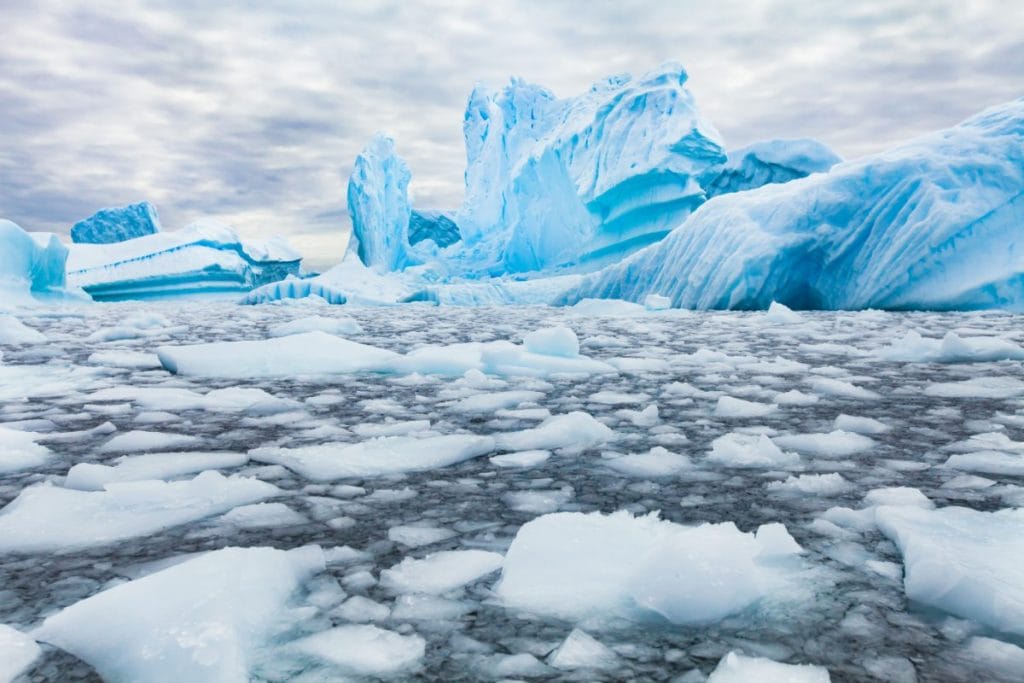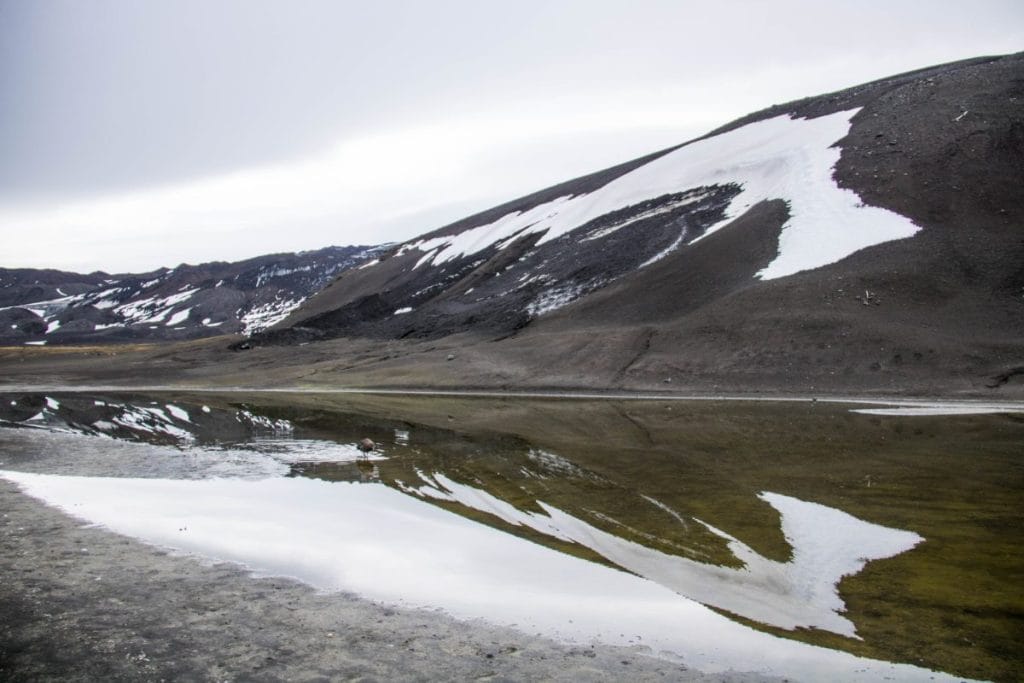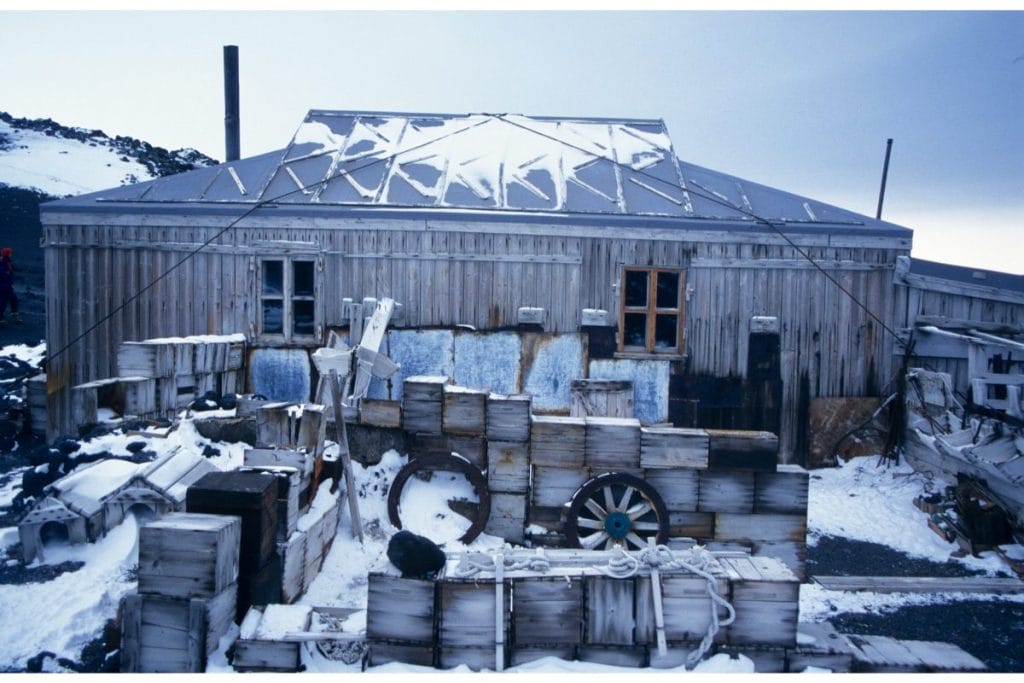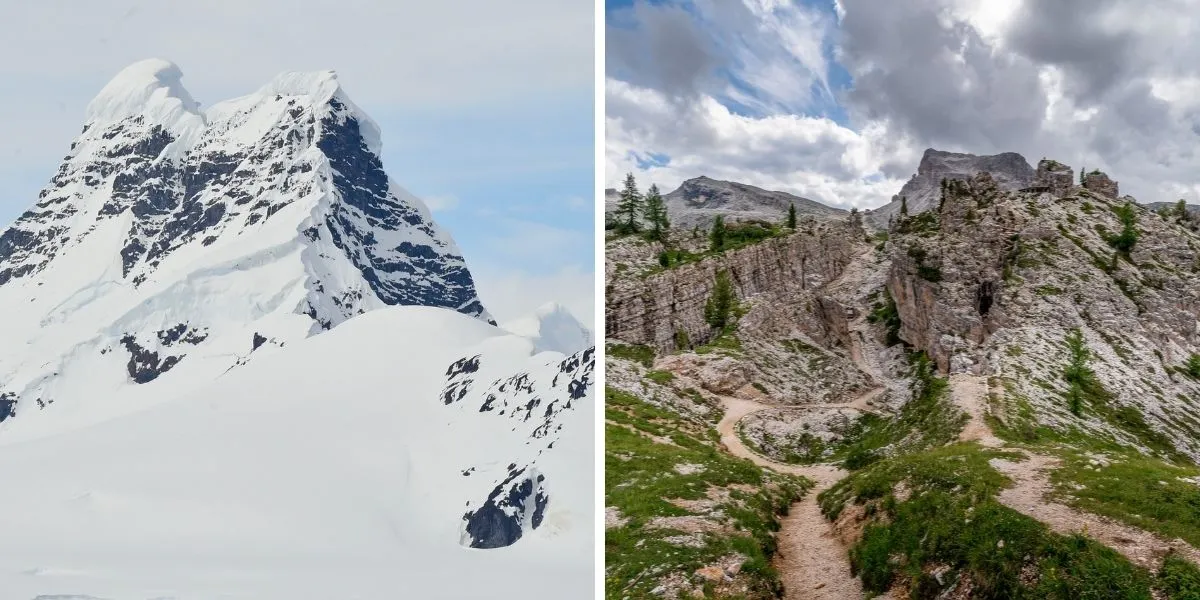We always hear about the problems with the ice melting in Antarctica, but why exactly is this a problem? What would happen if all the ice melted? We answer these questions below, sharing predictions based on scientific data and drawing on insights from our exclusive conversation with Professor Michael Hambrey, a prominent expert on glaciology, climate change, and Antarctica, who’s been researching and teaching for 50 years.
If Antarctica melted, it would cause sea levels to rise by at least 58m – which would place many coastal regions below sea level including big cities such as London, Bangkok, Hong Kong, and Shanghai, as well as whole regions such as Florida and the Netherlands.
But these aren’t the only consequences, keep reading for a full analysis, including 5 key things that would happen if all the ice in Antarctica melted and a discussion of whether humans could inhabit an ice-free Antarctica.
Note: This article contains speculation based on scientific data.
How Much Ice is in Antarctica?
Before talking about the consequences of Antarctica melting, let’s consider just how much ice is in Antarctica.
The size of Antarctica is 4.2 million km2 (5.5 million sqm) and it is almost entirely covered by ice that is on average 1,800 meters (5,900 feet) thick. https://www.britannica.com/place/Antarctica So, that’s a lot of ice.
This means that it contains approximately 30 million km³ of ice, approximately 90% of all the ice on Earth and 70% of all the fresh water on Earth1 (source: National Science Foundation).
So when we talk about all of the ice on Antarctica melting, it’s the equivalent of taking all of the lakes and rivers on Earth and tipping them into the ocean more than twice over.

What Would Happen If All the Ice in Antarctica Melted?
In short, it would be disastrous if all the ice melted.
“Probably the biggest threat to humanity”, Professor Hambrey tells Polar Guidebook, “is the fate of the West Antarctic Ice Sheet”.
He adds: “Thwaites Glacier is thought potentially within a human lifetime to ‘shatter like a car windscreen’. Along with Pine Island Glacier and others in the region, the demise of these outlet glaciers could trigger disintegration of the whole Ice Sheet, within which over 2 metres of sea-level rise are currently locked up”.
So how likely is it for this disaster to happen? Unfortunately, it’s a real possibility. Professor Hambrey concludes:
“This is not an impossible scenario, as it has happened in the geological past. The question is not if, but when and on what time-scale”.
Here are the five key things that we’d likely see if Antarctica became ice-free right now:
1. Sea Levels Would Rise At Least 58m
If all the ice in the Antarctic ice sheet melted, this would result in a sea-level rise of 58m. In order for this to happen, the average temperature would need to rise more than 10 degrees above industrial levels2 (source: J. Garbe, Nature, Vol. 585, pp. 538–544, 2020).
This would likely result in the loss of many coastal cities that have low elevation, including London, Bangkok, Venice, Copenhagen, Mumbai, Calcutta, Hong Kong, Shanghai, Buenos Aires, Seattle, San Diego, and more.
But it’s not just cities, entire countries and states could end up underwater. Florida would be a distant memory and most of the Netherlands, Demark and Bangladesh would lie underwater too.
This video shows exactly how the world would look with the new shoreline.
The loss of these cities would displace many millions of people across the world, these are termed ‘climate refugees’. It’s already expected that there will be 200 million climate refugees over the next 3 decades with temperatures growing by 2 degrees above pre-industrial levels3 (source: V. Clement, et al., Groundswell Part 2 : Acting on Internal Climate Migration). So we can expect billions of climate refugees if all the ice melts in Antarctica (a rise in temperatures by 10 degrees).
2. Antarctica Itself Would Rise
It’s not just the melting sea ice that would cause sea levels to rise.
An estimated 23% of the ice in Antarctica is formed on land that is below sea level4 (source: British Antarctic Survey).
The weight of all the ice in Antarctica is estimated at 27 million billion tons (27,000,000,000,000,000 tons) which places a lot of pressure on the land underneath and means that it is pushed down further than it would ordinarily sit.
If all of the ice were to melt, the weight on the landmass reduces so it would rise back up again over time5 (source: Science Advances, L. Pan. et al, Vol 7, Issue 18, 2021). This would further push up sea levels as more water is pushed into the ocean.
If you are struggling to understand why this is, imagine placing a brick into a bowl of water. The volume from the brick causes the water level to rise, much like the sea level would with more land in it.
3. Volcanoes May Destabilize in Antarctica
Many people don’t realize that Antarctica is home to at least 138 volcanoes, ranging in height from 100m to over 4,000m above sea level. This makes it one of the densest volcanic areas on earth.
When volcanoes cool, their magma chambers become pressurized but the weight of the rock on top prevents them from erupting. In Antarctica, the mass weight from the vast amounts of ice on top is likely preventing many subglacial volcanoes from erupting.
However, in a scenario where all of the ice in Antarctica melts, the reduction of pressure could cause these volcanoes to erupt making it a very dangerous area to go6 (source: The Conversation).

4. The Sea Would Be Diluted Affecting Ocean Currents
The ice in Antarctica is not frozen water from the ocean, it’s made from many millennia of frozen precipitation (mostly rain and snow), this means that it’s freshwater, not saltwater.
This is important because if it melted, all that freshwater would run into the ocean and dilute the existing saltwater.
Why is this a problem? Well, ocean currents have a large impact on the global climate. Currents such as the gulf stream bring warm waters north where they release heat into the atmosphere. Deep ocean currents then return cold water to the south.
All of this only works because warm salty water rises, whereas cold freshwater sinks. So if the ocean was less salty, the warm waters would not make it to the north which could cause a global cooling event as has happened in the past around 8,200 years ago7 (source: T.E. Törnqvist, et al., Geophysical Research Letters, Vol. 31, No. 23, 2004).
Ocean currents also have an impact on other weather events, including hurricanes, droughts, and heatwaves across the rest of the world8 (source: Live Science).
As for the animals in the ocean, the impact is unclear. We know that fish have evolved to live in both freshwater and seawater, with some living in both. But if the melting of the Antarctic ice is rapid, they may not have enough time to adapt.
5. Antarctica Might Turn Green Again
Antarctica was once a luscious tropical green rainforest inhabited by dinosaurs. Since then, it has evolved greatly into the polar desert we now know.
One of our top facts about Antarctica is that it’s home to only two flowering plants: Antarctic pearlwort and Antarctic hair grass.
These two species have already started to flourish and spread across the continent as the temperatures have begun to warm.
Antarctic pearlwort grew five times faster between 2009 and 2018 than any time over the previous 50 years, whilst Antarctic hair grass grew ten times faster9 (source: N. Cannone, Current Biology, Vol 32, Issue 7, pp. 1599-1606, 2022).
If the continent continues to warm and the ice melts, we could witness the re-greening of Antarctica with lower-level plant species such as grass. Although it’s unlikely to return to the sub-tropical rainforest it once was since it now sits over the south pole where it can be dark for months at a time, affecting the potential for vegetation.
Could We Live in Antarctica If It Melted?
From surveys of the landmass underneath the Antarctic ice sheets, we know that it’s a continent with a complex landscape of mountain ranges, hills and rolling plains, broken up by valleys and deep gorges10 (source: British Antarctic Survey, via Phys.org). Sounds, pretty nice, so could we live there if all the ice melted?
Yes, technically you could live in Antarctica if all the ice melted, in fact, people already live in Antarctica for long periods of time at the research bases, although not permanently. However, these bases contain a relatively small population and rely on supplies from overseas for food and other essentials.
In our scenario, it’s likely that the whole world would be in turmoil from mass floods and migration, so the real question is, could a significant human population live in Antarctica without help from the outside world?

This is much more unlikely. The biggest problem with living in Antarctica would be food. Since there are no native land animals, you would either need to rely on eating fish or growing your own plants, both of which could be problematic with a larger population.
Since it’s unclear whether the fish could survive in a diluted ocean (see point no.4 above), the ability to grow crops would be essential. But this also has challenges.
Although the continent will have thawed out in this scenario, Antarctica experiences polar nights which are long parts of the year without sunlight, an essential ingredient for plant growth. This means that growing enough crops to feed a large population would be difficult and the lack of firewood from trees would make it very cold throughout the polar nights.
Before the ice in Antarctica, it was once a green luscious rainforest, although since then it has moved to its current position over the north pole so a return to the tropical conditions is unlikely.
The terrain also poses a problem. Much of West Antarctica has a low elevation so it would end up below sea level if all the ice melted. As for East Antarctica, this is very mountainous so living there would be difficult, although not impossible11 (source: Discovering Antarctica).
In summary, it would be difficult to sustain a large human population in Antarctica, even if all the ice melted, this is due to the terrain and polar nights.
However, it’s not completely impossible. So, in a scenario where sea levels are 70m higher and there is mass migration across the world, it could be a reasonable suggestion.



![Read more about the article 7 Antarctica Conspiracy Theories [+ The Truth Behind Them]](https://polarguidebook.com/wp-content/uploads/2022/04/Antarctica-Conspiracy-Theories-300x150.jpg)

![Read more about the article 21 Jokes About Antarctica and the South Pole [One-Liners, Dad Jokes + More]](https://polarguidebook.com/wp-content/uploads/2022/11/Antarctic-jokes-300x200.jpg)